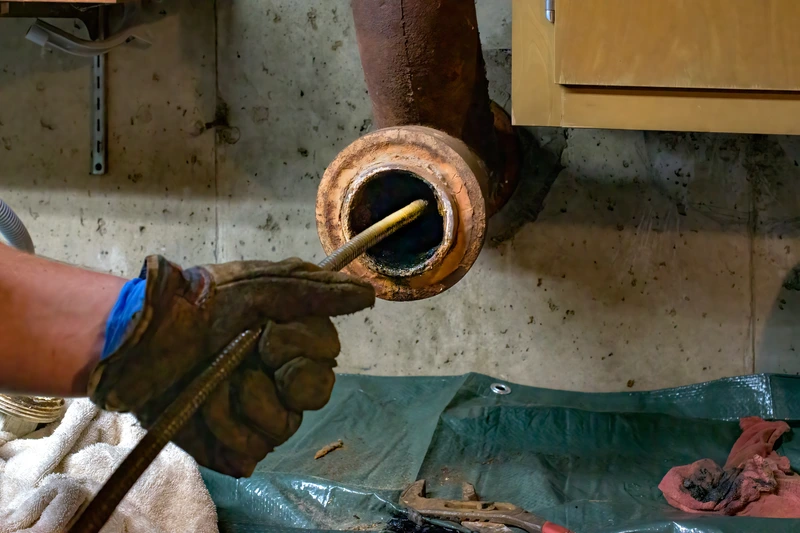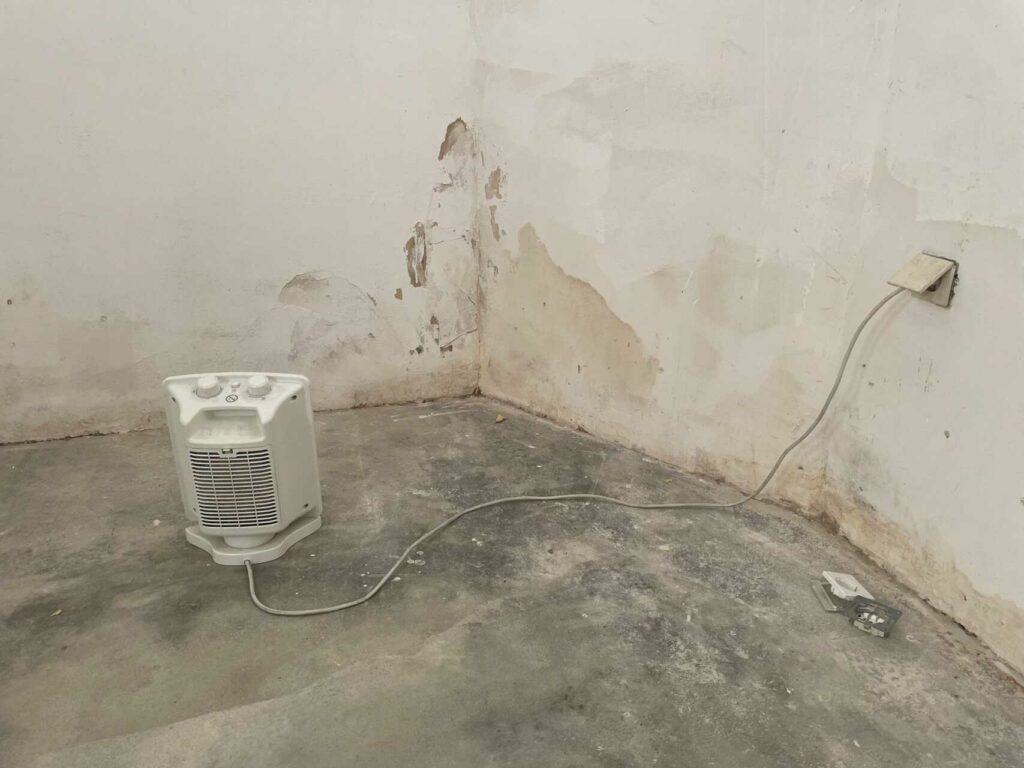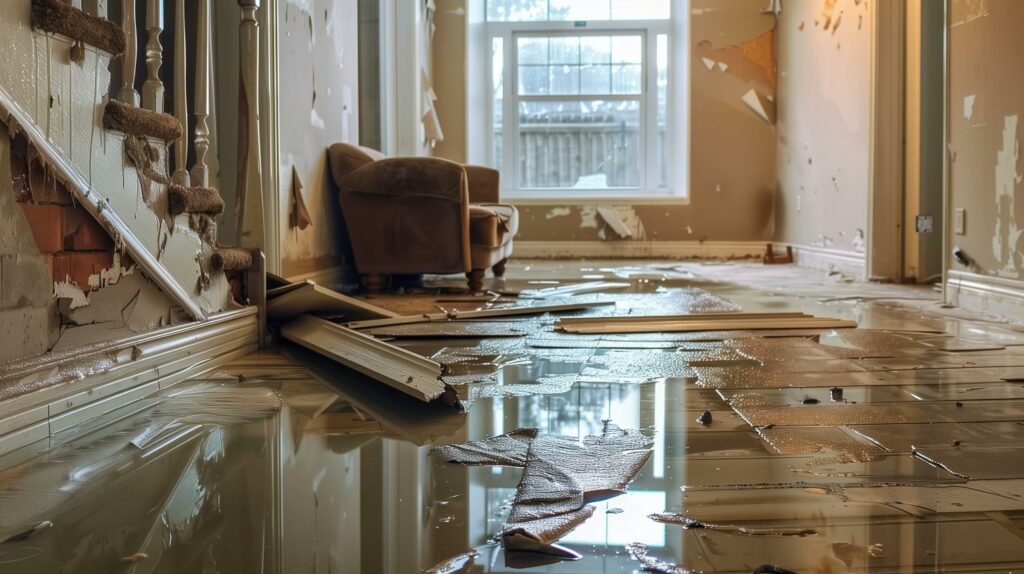Contents
Do you know how often your drain pipes need to be replaced? What is the lifespan of home plumbing?
Understanding the factors affecting their lifespan and recognizing the signs of damage can help you avoid costly plumbing issues.
This article will provide you with essential information on extending the lifespan of your drain pipes and the average lifespan of different types.
By taking proactive measures, you can ensure that your drain pipes continue to serve you and your household efficiently.
Key Takeaways
- The lifespan of drain pipes can vary depending on factors such as the material of the pipes, quality of installation, regular maintenance and cleaning, water quality, and proper drainage system design.
- Signs that drain pipes may need to be replaced include slow drainage, water leaks, foul odors, persistent clogs, and visible pipe damage.
- Common causes of drain pipe damage include corrosion, tree root intrusion, improper installation, poor maintenance, and extreme temperatures.
- To extend the lifespan of drain pipes, it is recommended to practice good drain habits, clean drains regularly, schedule professional inspections, use drain strainers, and run hot water regularly.
Factors Affecting Drain Pipe Lifespan
There are several factors that can significantly impact the lifespan of your drain pipes. Understanding these factors will help you take better care of your plumbing system and avoid unnecessary replacements.
The first factor to consider is the material of your drain pipes. Different materials have varying levels of durability and resistance to corrosion. For example, PVC pipes are known for their longevity and resistance to chemical damage, while older metal pipes may be more susceptible to rust and deterioration.
Another crucial factor is the quality of installation. Poor installation can lead to leaks, blockages, and premature wear and tear. It’s essential to hire a professional plumber who has the expertise to install your drain pipes correctly. They’ll ensure that the pipes are aligned correctly, securely connected, and properly sealed, minimizing the risk of future problems.
Regular maintenance and cleaning also play a vital role in extending the lifespan of your drain pipes. Over time, debris, grease, and other substances can accumulate in the pipes, causing clogs and potential damage. By scheduling routine drain cleaning and being mindful of what goes down your drains, you can prevent blockages and maintain the optimal flow of water.
Additionally, the water quality in your area can affect the lifespan of your drain pipes. Hard water with high mineral content can lead to mineral buildup and clogs, which can damage the pipes. Using a water softener or installing a filtration system can help mitigate these issues and protect your pipes.
Signs That Your Drain Pipes Need Replacement
If you notice persistent clogs, leaks, or foul odors coming from your drains, it may be a sign that your drain pipes are in need of replacement. Don’t worry, though! We’re here to help you identify the signs that your drain pipes need replacement, so you can avoid any further inconvenience or damage.
Here are three key indicators to keep an eye out for:
- Slow drainage: If you find that water takes longer than usual to drain from your sinks, shower, or bathtub, it could be a sign of a blockage or deterioration within your drain pipes. This can occur due to the buildup of debris, such as hair, grease, or mineral deposits, over time. If regular cleaning or plumbing solutions don’t resolve the issue, it might be time to consider replacing your drain pipes.
- Water leaks: Leaks are never a good sign, especially when it comes to your drain pipes. If you notice any water dripping or pooling around your pipes, it’s essential to address the issue promptly. Leaks can cause structural damage, mold growth, and even compromise the integrity of your entire plumbing system. Replacing your damaged drain pipes can prevent further water damage and keep your home safe and dry.
- Foul odors: Unpleasant smells coming from your drains aren’t something to ignore. Foul odors can indicate a buildup of sewage or other organic matter within your drain pipes. This can happen due to a blockage or a crack in the pipes, allowing sewage to seep out. If you’re consistently experiencing foul odors, it’s crucial to have your drain pipes inspected and replaced if necessary.
Common Causes of Drain Pipe Damage
To understand the common causes of drain pipe damage, let’s delve into the factors that can lead to the deterioration of your plumbing system.
Your drain pipes can be subject to various issues that can compromise their integrity and functionality.
One common cause of drain pipe damage is corrosion. Over time, the constant exposure to water and chemicals can cause the pipes to corrode, leading to leaks and blockages.
Another common cause is tree root intrusion. Tree roots are naturally drawn to sources of water, and if they find their way into your drain pipes, they can cause significant damage by blocking the flow of water or even causing the pipes to crack or collapse.
Additionally, drain pipes can be damaged due to improper installation or poor maintenance. If the pipes aren’t correctly installed or if they aren’t regularly cleaned and maintained, they can become susceptible to damage over time.
Furthermore, extreme temperatures can also contribute to drain pipe damage. Freezing temperatures can cause the pipes to expand and contract, leading to cracks and leaks. On the other hand, high temperatures can cause the pipes to weaken and degrade.
It’s important to be aware of these common causes of drain pipe damage in order to take preventive measures and ensure the longevity of your plumbing system. Regular inspections, proper maintenance, and prompt repairs can help mitigate these risks and keep your drain pipes in good condition.
How to Extend the Lifespan of Your Drain Pipes
To extend the lifespan of your drain pipes, proper maintenance and regular inspections are essential. By taking the time to care for your drain pipes, you can avoid costly repairs and replacements in the future.
Here are three simple steps you can take to keep your drain pipes in excellent condition:
- Practice good drain habits: Avoid pouring grease, oil, or food scraps down the drain as they can build up and cause clogs. Use drain strainers to catch hair and debris, preventing them from entering the pipes. Additionally, run hot water down the drain regularly to help prevent the buildup of residue and keep the pipes flowing smoothly.
- Clean your drains regularly: Regularly clean your drains using natural solutions like a mixture of baking soda and vinegar. This can help remove any buildup and keep your pipes clear. Avoid using harsh chemical drain cleaners as they can damage the pipes over time.
- Schedule professional inspections: Arrange for a professional plumber to inspect your drain pipes regularly. They can identify any potential issues before they become major problems. Professional inspections can help detect leaks, cracks, or corrosion early on, allowing for timely repairs and preventing further damage.
Average Lifespan of Different Types of Drain Pipes
Drain pipes typically have an average lifespan of 25 to 40 years, depending on the material used. Understanding the lifespan of different types of drain pipes can help you plan for maintenance and replacement.
Here is a brief overview of the average lifespan of common drain pipe materials:
- PVC (Polyvinyl Chloride): PVC pipes are the most commonly used material for drain pipes. They’re durable, resistant to corrosion, and have a lifespan of around 25 to 40 years. Regular maintenance and cleaning can help extend their lifespan.
- Cast Iron: Cast iron drain pipes are known for their durability and strength. They can last up to 50 years or more with proper care. However, they may be prone to rust and corrosion over time, so regular inspections are essential.
- Galvanized Steel: Galvanized steel pipes have a lifespan of about 20 to 50 years. They’re resistant to corrosion but may develop leaks and clogs due to mineral buildup. Regular maintenance and timely repairs can help prolong their lifespan.
- Copper: Copper drain pipes have a lifespan of 50 to 70 years. They’re resistant to corrosion and offer excellent longevity. However, they’re more expensive than other materials and may require professional installation.
- ABS (Acrylonitrile Butadiene Styrene): ABS pipes are commonly used for residential drain systems. They have a lifespan of around 50 years and are resistant to chemicals and temperature changes. Regular inspections and prompt repairs are necessary to maintain their functionality.
Conclusion
So, now you know how often drain pipes need to be replaced.
By being aware of the signs of damage and taking steps to extend their lifespan, you can avoid costly replacements.
Remember to regularly inspect your drain pipes and address any issues promptly to ensure the proper functioning of your plumbing system.
With proper care and maintenance, your drain pipes can last for many years, providing you with efficient drainage and peace of mind.




